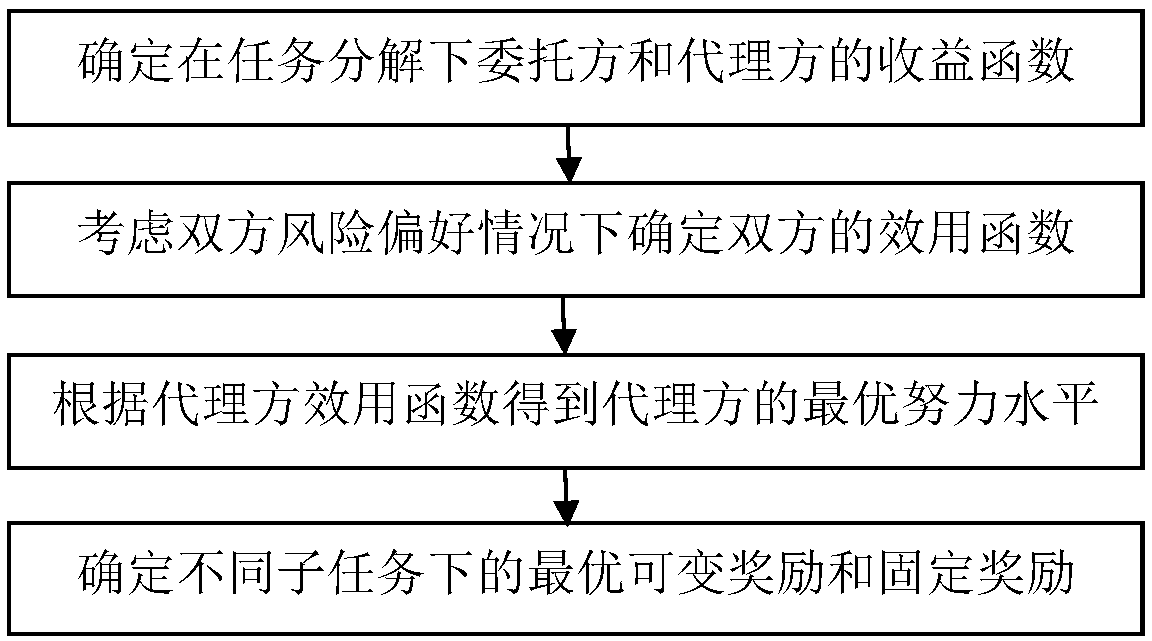Method of constructing multi-dimensional incentive contract under complex task decomposition
A technology of complex tasks and construction methods, applied in the field of incentive contract construction, can solve problems such as the incompatibility of the agent's ability without considering the difficulty of the task, the inability to achieve the best incentive effect, and the theoretical method not conforming to the incentive environment.
- Summary
- Abstract
- Description
- Claims
- Application Information
AI Technical Summary
Problems solved by technology
Method used
Image
Examples
Embodiment Construction
[0065] In this example, see figure 2 , the implementation process of the incentive contract between the entrusting party E and the agent R is divided into four stages, which are: the first stage is task decomposition. According to the complexity of the task, the entrusting party E decomposes the task into several sub-tasks of lower complexity for the agent R to choose; the second stage is the construction and establishment of the incentive contract. According to the ability level difference and task decomposition of the agent R, the entrusting party E respectively constructs a contract for the agent R with a high ability level and a low ability level. Variable rewards. The agent R chooses the corresponding incentive contract according to its own ability level, and chooses to accept the contract when the expected utility is not less than the retained utility, otherwise it refuses to cooperate; the third stage is the fixed reward implementation stage. The entrusting party E p...
PUM
 Login to View More
Login to View More Abstract
Description
Claims
Application Information
 Login to View More
Login to View More - R&D
- Intellectual Property
- Life Sciences
- Materials
- Tech Scout
- Unparalleled Data Quality
- Higher Quality Content
- 60% Fewer Hallucinations
Browse by: Latest US Patents, China's latest patents, Technical Efficacy Thesaurus, Application Domain, Technology Topic, Popular Technical Reports.
© 2025 PatSnap. All rights reserved.Legal|Privacy policy|Modern Slavery Act Transparency Statement|Sitemap|About US| Contact US: help@patsnap.com



